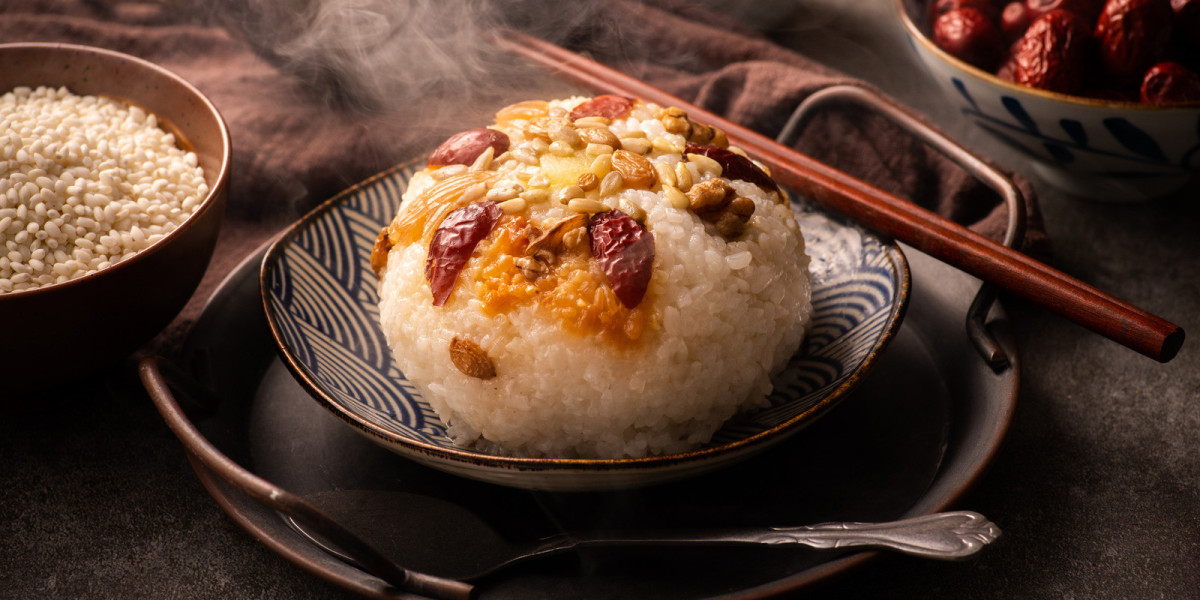Ba Bao Fan, also known as Eight-Treasure Rice Pudding, is a visually stunning and culturally rich Chinese dessert often served during festive occasions like Lunar New Year. It’s famous for its vibrant array of sweet toppings—usually eight, hence the name—placed over a glutinous rice base. While the traditional version often includes lard, honey, and even animal-based gelatin, there's a growing interest in making plant-based versions of this beloved dish. So, can you make a vegan version of Traditional Ba Bao Fan? Absolutely, and the result is just as delightful, colorful, and meaningful.
Understanding Traditional Ba Bao Fan
Before we begin tweaking the recipe, it's essential to understand what makes Ba Bao Fan so unique.
Core Components:
- Glutinous Rice Base: Sticky rice (also called sweet rice) is steamed and lightly sweetened, forming the foundation of the dish.
- The "Eight Treasures": These typically include dried fruits (like dates, raisins, and longan), nuts (such as walnuts or lotus seeds), candied peels, and sometimes jellied toppings.
- Sweet Syrup or Sauce: A sugar syrup often made from honey or lard-infused sugar adds moisture and flavor.
- Binding Agents: Gelatin or pork fat may be used in traditional recipes to help maintain the pudding's structure.
For a vegan version, the focus is on replacing the animal-derived ingredients while keeping the symbolic and culinary essence of the dish intact.
Step-by-Step Guide to Making Vegan Ba Bao Fan
Let’s walk through how to create a beautiful vegan Ba Bao Fan.
1. Choosing the Right Rice
Start with glutinous rice, also known as sticky rice. This is naturally vegan and provides the chewy texture central to the dish.
- Tip: Soak the rice overnight for better steaming and consistency.
- Optional Add-In: A few spoonfuls of coconut milk can be added for flavor and creaminess, giving it a slight tropical twist while keeping it vegan.
2. Assembling the Eight Treasures
Your treasures should be not just diverse in color and taste but also plant-based. Here's a list of popular vegan-friendly options:
- Red dates (jujubes) – sweet and chewy
- Lotus seeds – creamy when cooked
- Goji berries – tart and nutrient-rich
- Candied winter melon – for texture
- Raisins – provide natural sweetness
- Walnuts or pine nuts – add crunch
- Dried longan – smoky and sweet
- Sweet red bean paste – traditionally used in the center
Note: You don’t have to strictly use eight ingredients. The number eight is symbolic in Chinese culture, representing wealth and good luck, so keep that spirit alive with colorful and varied additions.
Vegan Alternatives for Common Ingredients
To truly veganize the recipe, you need to replace a few key components:
1. Lard or Animal Fat
Replacement: Use coconut oil or vegan butter. These give richness and help bind the pudding.
- Coconut oil is especially suitable due to its subtle sweetness and ability to solidify when cooled, aiding structure.
2. Honey
Replacement: Use maple syrup, agave nectar, or brown rice syrup. These mimic the viscosity and sweetness of honey without being derived from animals.
- Agave nectar is neutral in flavor, making it a perfect substitute if you want the other ingredients to shine.
3. Gelatin
Replacement: Use agar-agar, a seaweed-based thickening agent that acts very similarly to gelatin.
- Agar sets at room temperature and is widely used in Asian vegan cooking, making it a great choice for firming up the dessert.
How to Assemble the Vegan Ba Bao Fan
- Layering the “Treasure” Ingredients
Grease a rounded bowl with coconut oil and place your colorful treasures on the bottom in a decorative pattern. This will be the top of the dish when inverted. - Add the Glutinous Rice Layer
Press half of the steamed sticky rice gently into the bowl, covering the treasure ingredients. - Insert the Filling
Add a spoonful of sweet red bean paste (vegan) into the center for flavor and symbolism. - Top With Remaining Rice
Press the remaining rice over the filling and smooth out the surface. - Steam the Entire Bowl Again
Steam for another 20–30 minutes to ensure all the layers meld together. - Prepare the Vegan Syrup
In a saucepan, heat a mix of brown sugar, agar-agar, and water until dissolved. Optionally, add a splash of orange zest or rose water for a floral note. - Flip and Glaze
Invert the pudding onto a plate and drizzle the syrup over the top to create a glossy, beautiful finish.
Pairing with Herbal Drinks
Traditional Chinese meals often end with a warming drink. You can complement your vegan Ba Bao Fan with a healthy, fermented drink like an Herbal Cordial Recipe with Alcohol that features botanicals such as ginger, goji, and licorice. These flavors pair well with the complex sweetness of Ba Bao Fan and add an element of sophistication to your meal.
Cultural Significance and Symbolism
The Eight Treasures aren't just chosen for taste—they carry deep cultural symbolism:
- Red dates signify prosperity.
- Lotus seeds symbolize fertility and purity.
- Goji berries and longans are associated with health and longevity.
- Candied fruits evoke sweetness in life and the year ahead.
In many households, Ba Bao Fan is served during Lunar New Year or weddings, acting as a sweet wish for abundance, family unity, and happiness.
By making a vegan version, you're not taking away from that tradition—you’re evolving it. Food is a living culture, and plant-based diets are a modern reflection of sustainability and ethical awareness.
Health Benefits of the Vegan Version
Choosing a vegan version can also be healthier:
- Lower in saturated fats: Coconut oil or vegan butter contains no cholesterol.
- Rich in fiber and nutrients: With the addition of nuts, dried fruits, and legumes, you get a range of vitamins and minerals.
- Plant-based gelatin (agar) is rich in calcium and iron.
- No refined sugars if using maple or agave syrup.
This makes it an excellent choice not only for vegans but also for those watching their cholesterol, managing diabetes (with mindful portioning), or seeking clean ingredients.
Variations You Can Try
- Tropical Ba Bao Fan
Use mango, coconut flakes, and passion fruit syrup for a Southeast Asian twist. - Matcha-Infused Rice Base
Add matcha powder to the rice for a slightly bitter, earthy base that contrasts beautifully with the sweet toppings. - Chocolate Ganache Drizzle
A modern Western fusion—drizzle vegan chocolate sauce over the top for a decadent upgrade. - Miniature Versions
Use ramekins or muffin tins to create individual servings for parties or events.
Final Thoughts: Embracing Tradition, Mindfully
So, can you make a vegan version of Traditional Ba Bao Fan? Yes, and it’s not only possible but incredibly rewarding. The vegan version honors the symbolic richness and celebratory nature of the original while embracing compassion, sustainability, and health-conscious eating.
Whether you're preparing this for a Lunar New Year feast, a family gathering, or simply to indulge in something special, the plant-based Ba Bao Fan can easily become the centerpiece of any dessert table.
Cooking is a beautiful way to bridge generations and ideologies. Veganizing traditional recipes like Ba Bao Fan is not about losing culture—it's about expanding it to include more inclusive, thoughtful practices. It’s one way to ensure that the wisdom of the past continues to nourish the future.


